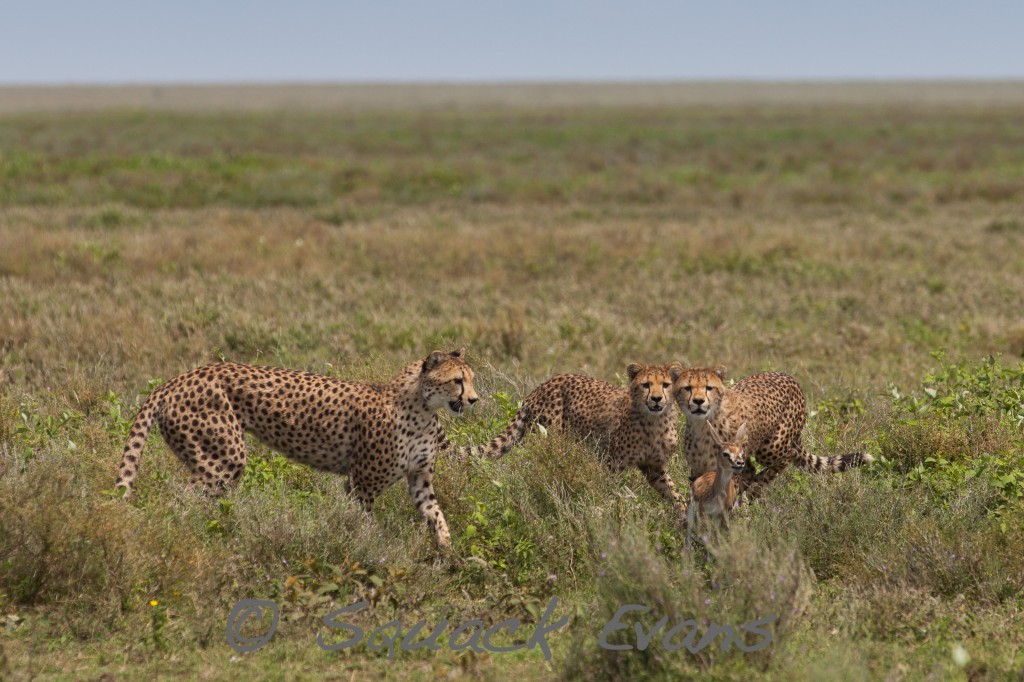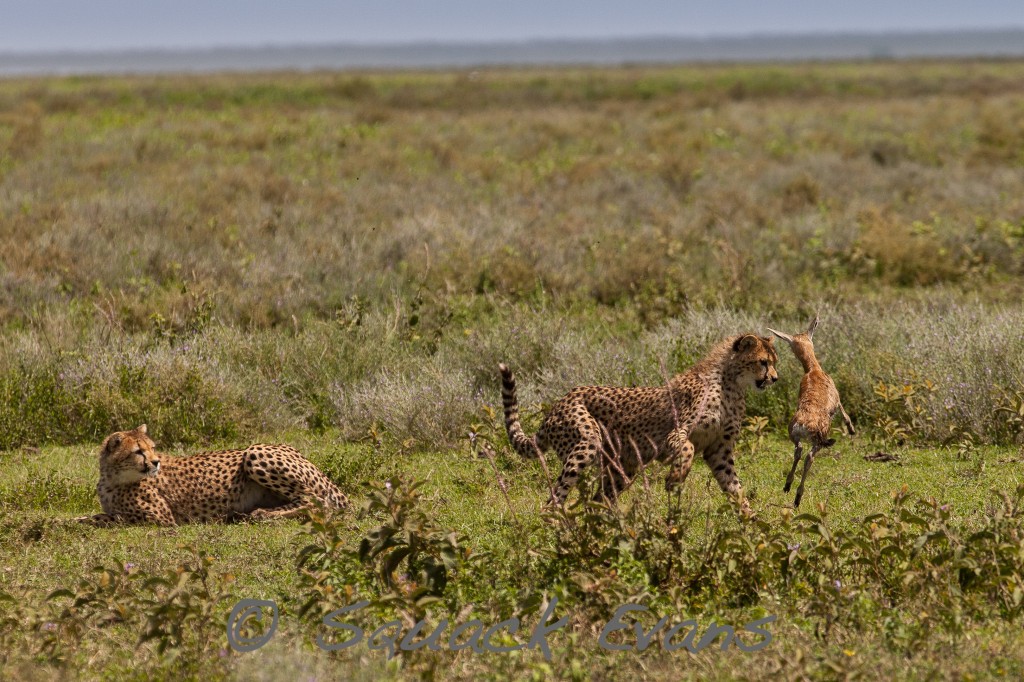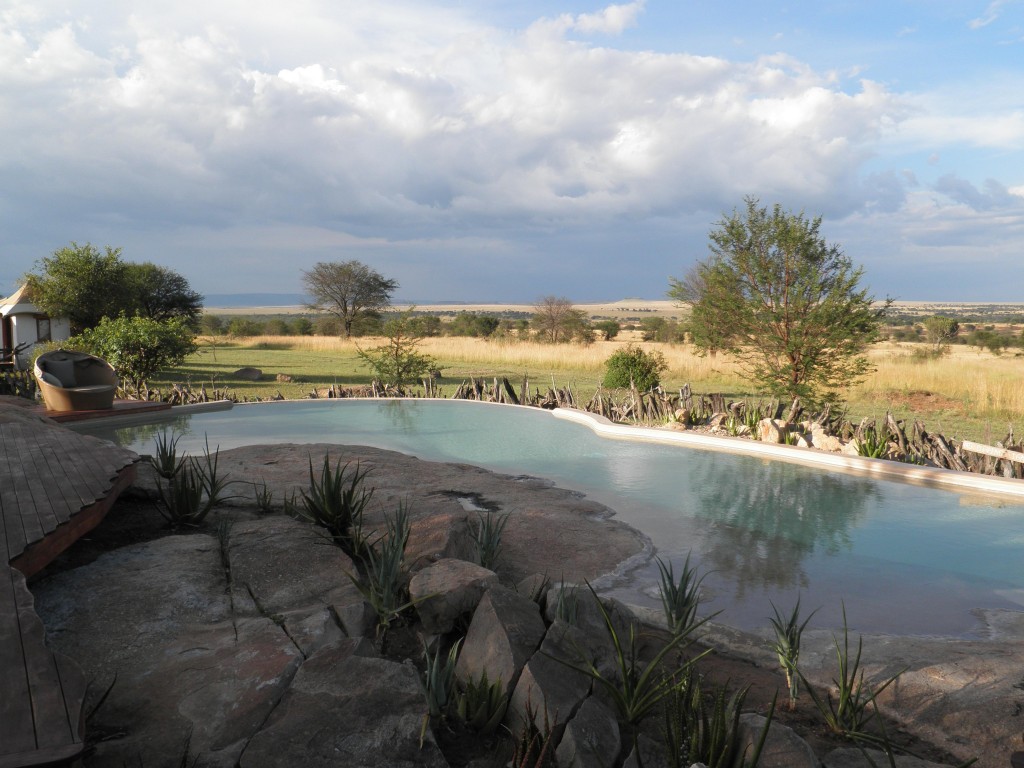A day in the Serengeti
Between January and March each year, the Serengeti produces some of the most dramatic wildlife scenes imaginable. This is when the vast herds of wildebeest camp out on the short-grass plains, and the females collectively give birth to hundreds of thousands of calves over a two-week period.
The synchronized birth of so many little gnus is a sight in and of itself, but it is just the beginning of an action-packed season full of baby antelopes: and fields flooded with prey allow the local carnivores to showcase their hunting skills out in the open.
Early one morning during a safari in the Serengeti this March, we found a female cheetah and her two large cubs out amongst the countless wildebeest near our camp in the Ndutu area. Over the next two hours we were privileged to witness a hunting lesson unfold as the mother cheetah flushed a young Thomson’s gazelle from its hiding spot and proceeded to allow her cubs to practice their hunting techniques, using the fawn as their toy. After letting the cubs repeatedly trip up and catch the fawn for what seemed like an endless hour, the mother finally instructed the cubs on the final blow and they devoured the kill. While we of course felt some sadness for the fawn, it was incredible to see young cheetahs learning behaviors that are critical for their survival.

A mother cheetah lets go of a Thomson’s gazelle fawn in order to give her cubs an opportunity to practice their hunting techniques.
We finished the day with a spectacular Serengeti sundowner, which was made even more enjoyable by an impromptu visit from Ingela Janssen, one of the local lion researchers. Ingela told us about the new work she is doing with the Serengeti Lion Project, trying to understand the threats to lion movement throughout the greater ecosystem, especially between the Serengeti National Park and Ngorongoro Crater. You can learn more about lion research in Tanzania here.
The Mara-Serengeti ecosystem continues to deliver, in my opinion, the greatest wildlife viewing anywhere on earth. There are exciting scenes all year round, and biologists out in the field rain or shine. We maximize our chances of being in the right place at the right time for these experiences with our choices of location for camps, game drives, and walks. And we always enjoy reliving the stories in the comfort of our camp or lodge at the end of the day.
My next update from the Mara-Serengeti will be in July or August, when we will be camped in the Kenyan part of the ecosystem for several safaris….along with more than a million gnus, zebras, and gazelles that will congregate there during the dry season.











